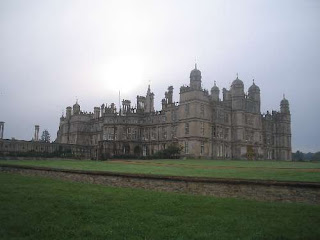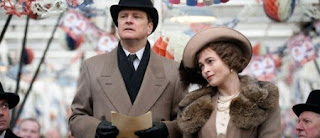One day, I shall have a Grade I listed home in England that will come complete with a typical English garden. This garden will include a multitude of roses, fountains, statuary, a maze, a grotto, a Ha Ha and even, perhaps, a hermit. Ha! Seriously, I always think a Ha Ha gives a property a substantial feel, as though it were absolutely necessary in order to separate your Georgian pile from the multitude of cows and sheep one is wealthy enough to allow to graze on one’s vast acreage. It is thought that their name, Ha-Ha, is derived from the sound persons made upon first encountering them. Ha-Has were both unexpected and amusing.
From Wikipedia: “The Ha-Ha is an expression in garden design that refers to a trench, in which is a fence concealed from view. Alternatively it can be used to mean a ditch the one side of which is vertical and faced with stone, the other face sloped and turfed, making the trench, in effect, a retaining wall (this is also sometimes known as a deer leap). The ha-ha is designed not to interrupt the view from a garden, pleasure-ground, or park, while maintaining a physical barrier at least in one direction.”
Here’s the Ha-Ha at Kyme Castle
And one at Leven Hall, below This is an arrangement of a sunken wall and ditch to allow views of the countryside beyond the garden and is the earliest recorded example of a Ha-Ha in England.
And (drumroll, please) the Ha-Ha at Burghley House
This is a sunken wall, which does not interrupt the views of a sweeping landscape, but which still does the job of keeping livestock away from gardens near a house. This feature began to form part of the English landscape in the 1720s. In 1770, Horace Walpole wrote: “No sooner was this simple enchantment made, than levelling, mowing, rolling followed. The contiguous ground of the park without the sunk fence was to be harmonised with the lawn within; and the garden in its turn was to be set free from its prim regularity, that it might assort with the wilder country without.”
A Ha Ha was also incorporated into the gardens at Kew, as descrived in Volume 10 of the Kew Bulletin, published by the Royal Botanical Garden in 1896: “The gardens of Kew are not very large, nor is their situation by any means advantageous, as it is low and commands no prospects. Originally the ground was one continued dead flat, the soil was in general barren, and without either wood or water. With so many disadvantages, it was not easy to produce anything tolerable in gardening; but princely munificence, guided by a director equally skilled in cultivating the earth and in the polite arts, overcame all difficulties. What was once a desert is now an Eden.
” The task could not have been easy. But there seems reason to believe that in the main features which still survive it was the work of (William) Kent, who has been termed the ‘founder of the school of landscape gardening.’ By the introduction of the sunk fence or ha-ha (largely used at Kew) instead of walls or fences,” he brought external scenery into his landscape effects.”
In A Treatise on the Theory and Practice of Landscape Gardening by Andrew Jackson Downing (1855) the author elaborates: It is not too much to say that Kent was the leader of this class. Originally a painter, and the friend of Lord Burlington, he next devoted himself to the subject, and was, undoubtedly, the first professional landscape gardener in the modern style. Previous artists had confined their efforts within the rigid walls of the garden, but Kent, who saw in all nature a garden-landscape, demolished the walls, introduced the ha-ha, and by blending the park and the garden, substituted for the primness of the old inclosure, the freedom of the pleasure-ground.

Here’s a wonderful journal of the restoration of the Ha Ha at the Stow Landscape Gardens, above, where William Kent’s ideas about garden design were also implemented. In 1741, Lancelot (Capability) Brown was hired as head gardener, in charge of executing Kent’s designs. Ten years later, in 1751, Brown left Stowe and later became the most sought after garden designer in England.

























